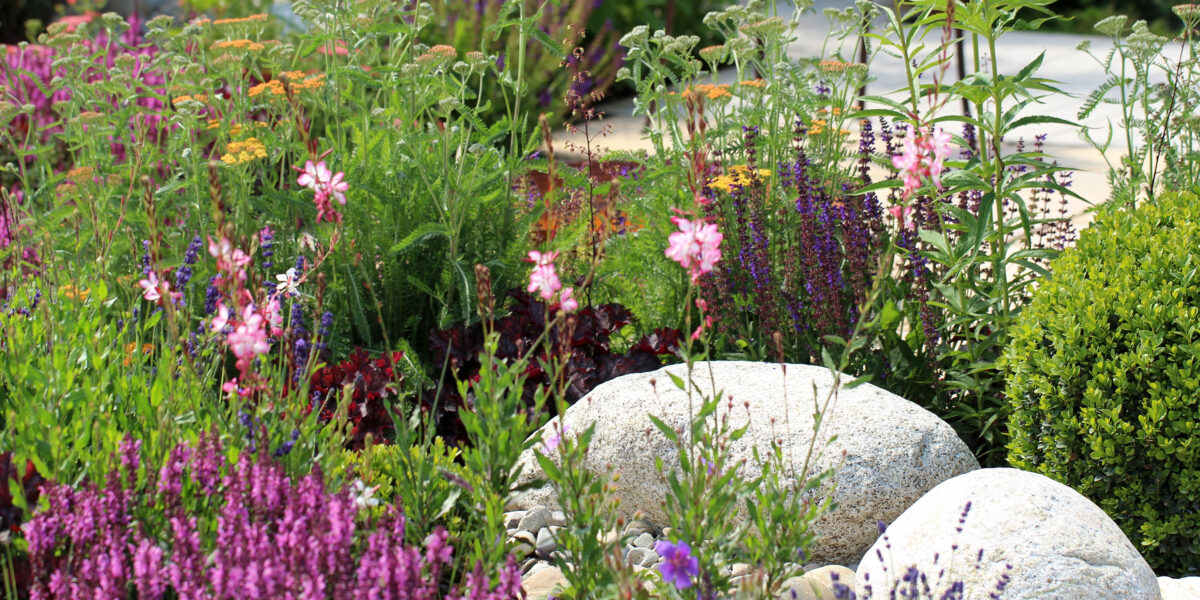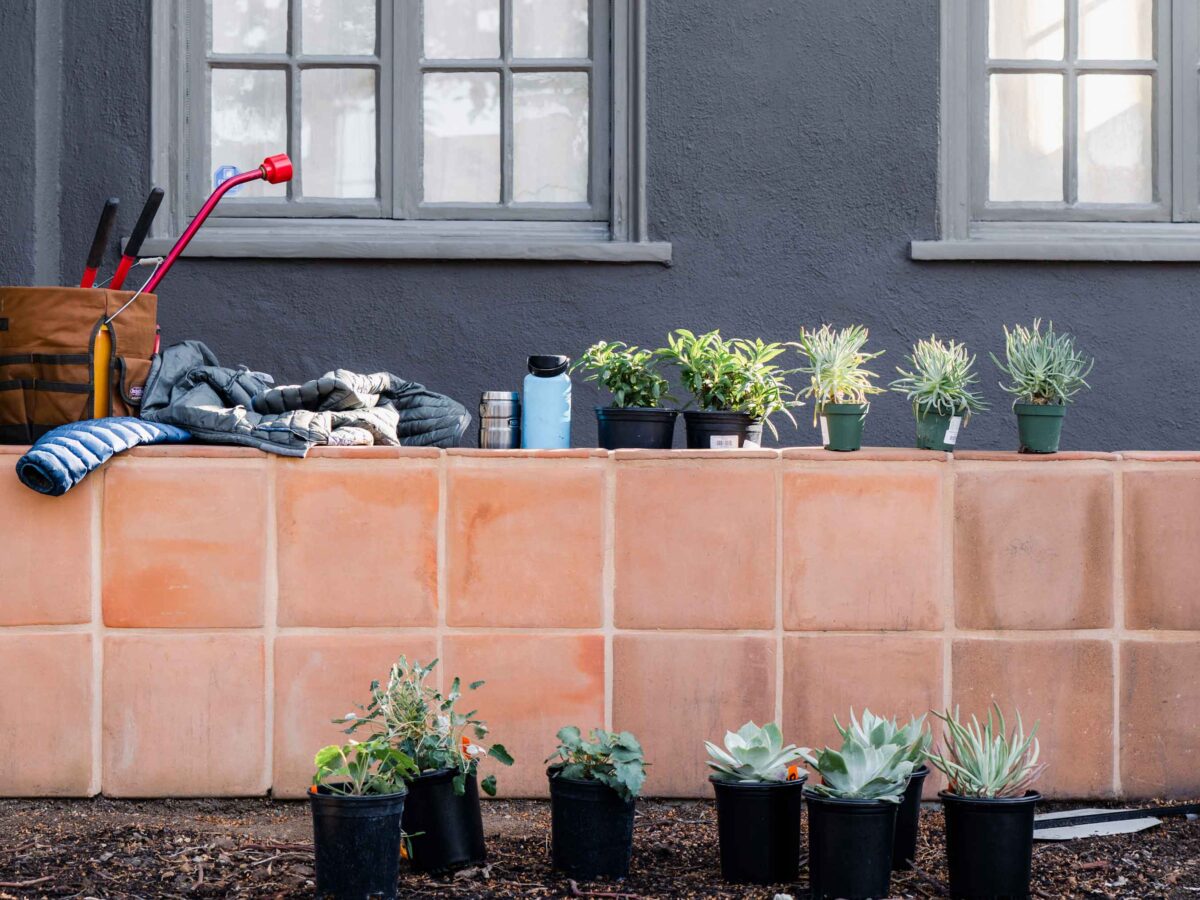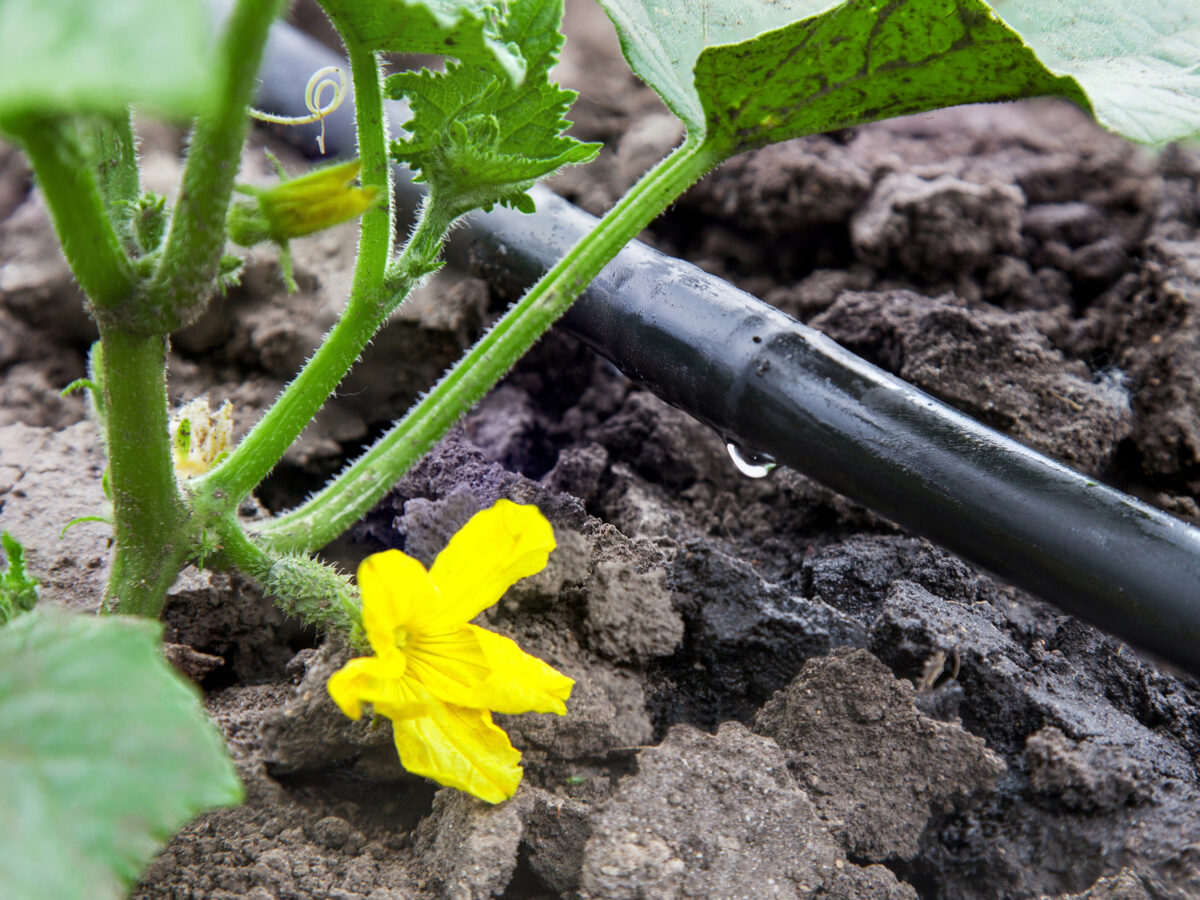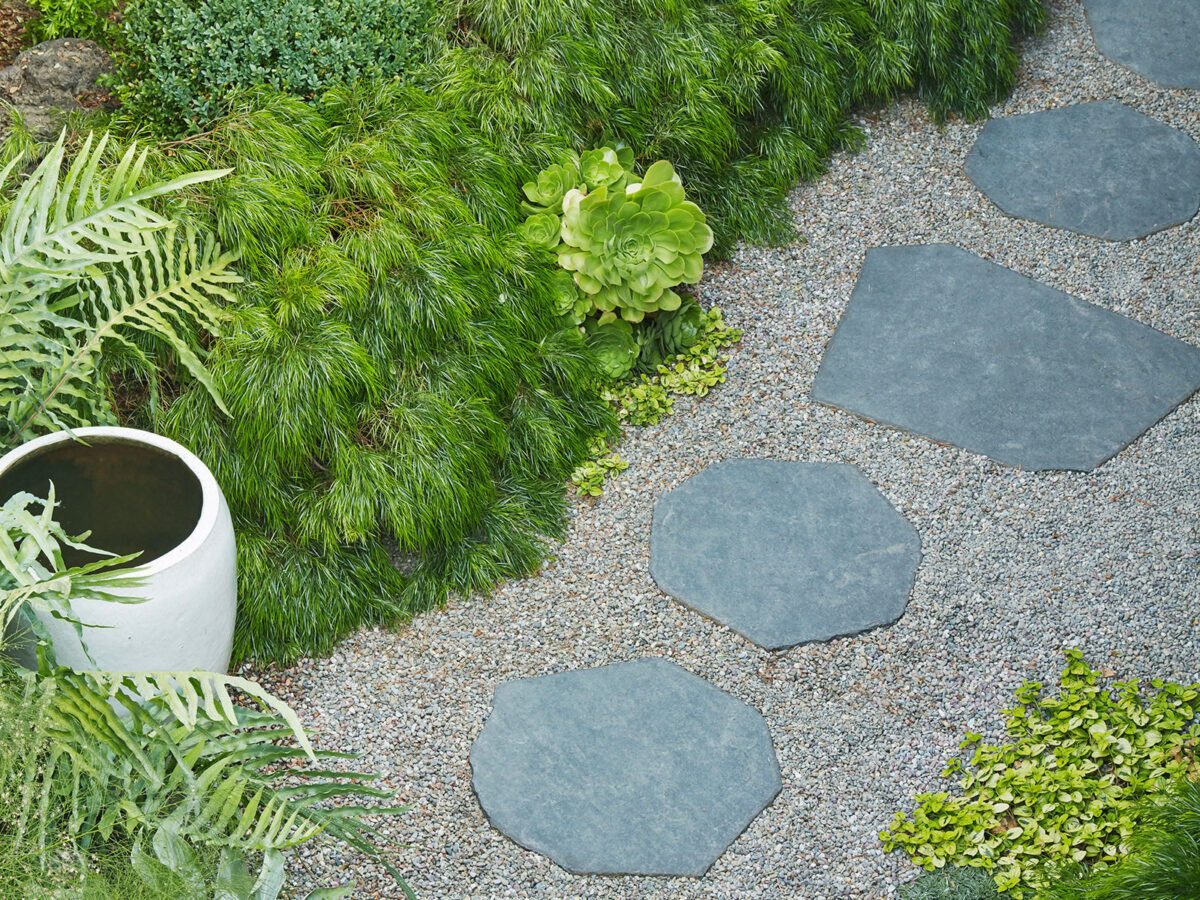
This Is What I Wish I’d Known Before Tearing out My Lawn
Patience, muddy paws, and a lot more prep work than anticipated—here’s how to plan your project right.

Someday the yard will be a native plant paradise. But it's not there yet. Photo by Fotolinchen/Getty.
I write this as I look out my kitchen window toward the area of my backyard that once was my lawn and is now… turning back into my lawn? I thought by now I would have installed the bioswales, the rain garden, the meadow, beautiful boulders and native plants—but, life happens and apparently so do hurricanes in Southern California, and they have resuscitated my dust bowl to the point where it needs another round of lawn removal. It’s been a journey. Not necessarily a bad one—just a longer one than I had anticipated. Much longer.
So here I am, in full transparency, ready to share a few things I wish I had known (or prepared myself for) before deciding to terminate the turf. Let’s just say it’s not really a “turn off the sprinklers and see how things go” type of mission. Fortunately, fall is the perfect time for native planting, and timing (not to mention detailed planning) truly seems to be a key factor for this project. Here’s hoping these tips will help your lawn replaceent go more smoothly than mine. As for me, it’s time for a do-over and I couldn’t be happier about it.
Rebate Before Rip-Out
I realize that enthusiasm for letting go of the watering and rushing into the removal can outweigh the desire to document, plan, and tackle some paperwork. But hear me out! If you are planning on applying for any kind of turf or low-water rebates, you must not only apply but get approved before you start any part of your project.
Most cities require extensive photo documentation and will not grant cash on lawns that partially or no longer exist. Some cities are kinder than others and will accept grass that is dead due to lowering your water use, but there still needs to be evidence there once was a lawn there… so put the sod cutter down and step away! Take the time to measure, photograph, and know that it might be several weeks to months before you get the official go-ahead. It’s worth it; just think of the free plants (or beautiful boulders) you’ll be able to buy with that rebate money.
Unexpected Delays

Thomas J. Story
Plant and labor shortages, extreme weather events? The hits just keep coming! No project goes as planned, but it’s important to expect delays when it comes to this kind of thing. While you might be able to get someone out for a bid this week, it’s going to be a month or so before breaking ground. Going the DIY route? Check all your local nurseries and native plant providers before beginning to ensure there is stock available. Native plants in particular are slow growing in their first two years. With increased interest, most growers are still trying to catch up with the demand. Luckily, when you do locate your plants, most nurseries will let you special or pre-order particular varieties with delivery included. And trust me, with some rebate rules stating the completed project area must be covered by at least three plants per 100 square feet, you might need more plants than you anticipated, no matter the size of your space.
Rethinking Irrigation

v_zaitsev/Getty Images
To be honest, it didn’t cross my mind that I would need to do some sort of irrigation swap until I started reading the turf rebate fine print and discovered that no overhead sprinklers are permitted in new designs. While most of the landscape ideas I had in mind would require no irrigation at all, I realized certain areas would benefit from drip lines or micro sprays as the new plants got established.
While capping off the existing sprays might seem like an easy fix, temporary always turns into more work later, and it’s best to just get in there before any of the planting begins so you don’t disturb roots post-transplanting. Scheduling-wise, this realization brought my plan of action to a full stop as I suddenly needed to research and bid out new irrigation options. Don’t be like me—plan on adding this step to your project timeline and landscape budgeting so you’re not derailed.
Bless This Mess

©CaitlinAtkinson, courtesy of Flora Grubb
The jury is still out on how I might have done things differently with this undertaking. Unexpected rain and a dirt lot don’t pair well with canines and kiddos. Let’s just say we’ve been dealing with a lot of mud. Not just mud, but also copious amounts of dirt coming inside no matter the weather. Did I mention weeds? Oh, those are really coming up nicely. Plus, they are types of weed I’ve never seen before … where are you even coming from?
While sectioning off your backyard to tackle the project in phases seems like it ought to eliminate messes while still allowing access to the space, you will probably just find it infuriating to live in a construction zone for twice as long. I’ve definitely cut down the square footage of the area where my new meadow-like ground covering will go. Since we need to access this part of the backyard to get into the main garden, we can’t zone off large portions from people or paws. That being said, consider your high-traffic areas and parts of the garden that will need to be accessed during the installation or establishment periods and then design around them. At the moment a DIY slate paver pathway is working well in our yard for foot traffic as we navigate next steps and rethink where certain design elements will work best with our flow of life.
Feeling overwhelmed? Don’t be! Every home renovation has unexpected twists and turns. Sometimes having a second chance will even make the outcome twice as nice. So, here’s to the new season ahead and getting these projects done with ease… even if it’s not your first go-round. Let’s remember to give ourselves grace when it comes to gardening.
